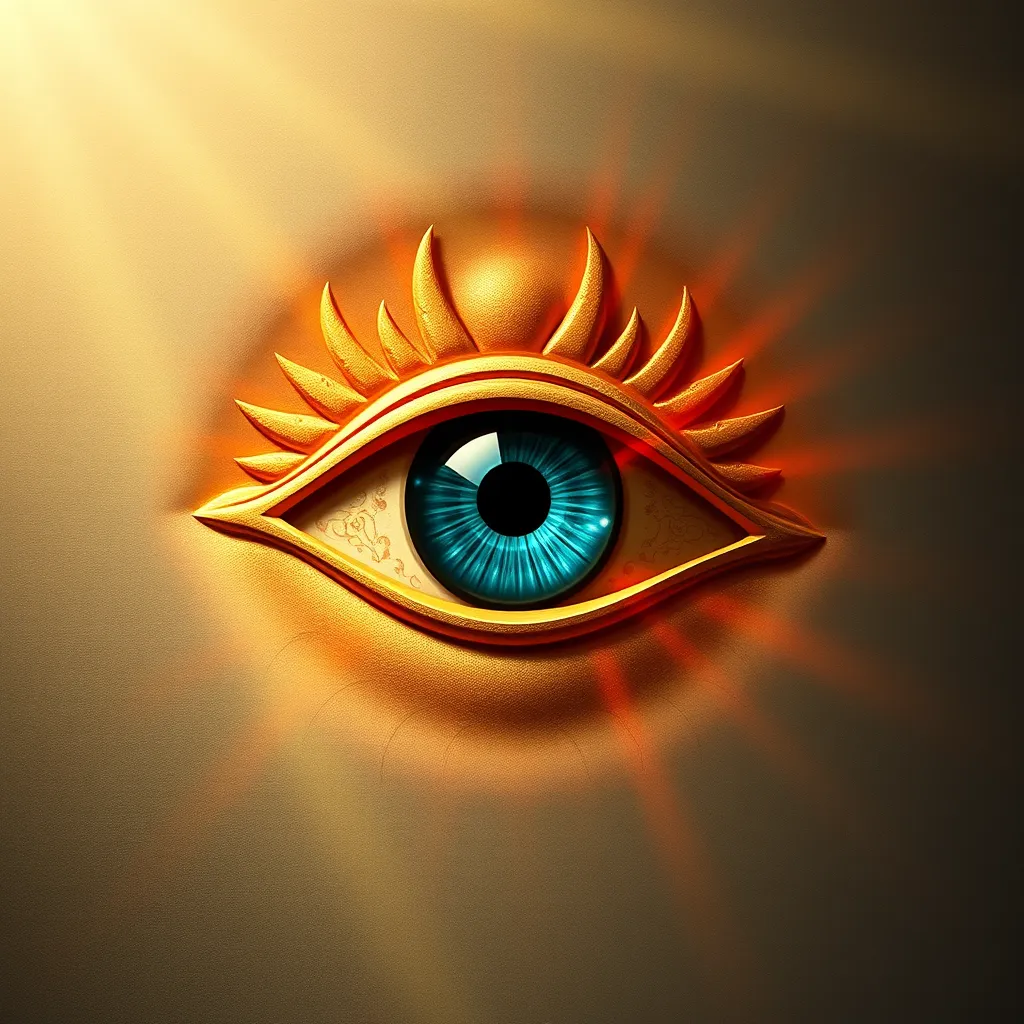The Eye of Ra: A Case of Divine Eyestrain
I. Introduction
The Eye of Ra is a prominent symbol in Egyptian mythology, revered for its powerful connotations of protection, authority, and the divine connection between the gods and humanity. As a representation of Ra, the sun god, the Eye of Ra embodies the fierce and protective aspects of the divine, acting as a guardian against chaos and evil. This article explores the significance of the Eye of Ra, the concept of “divine eyestrain,” and its enduring impact on both ancient and modern culture.
II. The Mythological Origins of the Eye of Ra
The Eye of Ra has rich mythological origins rooted in the ancient Egyptian belief system. It is often associated with the sun god Ra, who was considered the creator of the universe and the giver of life. The Eye itself is characterized by its fierce and protective nature, often depicted as a powerful goddess or a manifestation of Ra’s power.
- Historical context: The Eye of Ra was worshipped throughout various periods of ancient Egypt, becoming a vital part of their religious practices and myths.
- Connection to Ra: The Eye is often described as Ra’s daughter or an extension of his being, symbolizing his watchful and protective presence over the world.
- Legends: According to one myth, the Eye was created when Ra wept, and his tears turned into the first humans. This highlights the Eye’s dual role as both a protector and a source of life.
III. Symbolism and Cultural Interpretations
The Eye of Ra has served as a potent symbol of royalty and divine right throughout Egyptian history. Its interpretations have varied across different dynasties, reflecting the changing cultural landscape of ancient Egypt.
- Symbol of royalty: The Eye of Ra was often associated with the pharaohs, who claimed divine right to rule under its protection.
- Variations in representation: Different dynasties represented the Eye in various forms, from fierce lioness-like depictions to more serene and protective images.
- Eye of Ra vs. Eye of Horus: While the Eye of Ra represents the sun and is associated with the fierce aspects of protection, the Eye of Horus symbolizes healing and restoration, showcasing the complexities of divine symbolism in Egyptian mythology.
IV. The Eye of Ra in Art and Architecture
The Eye of Ra has been depicted in countless works of art and architectural features throughout ancient Egypt, serving both aesthetic and protective purposes.
- Depictions in art: Ancient Egyptian artists often illustrated the Eye of Ra in jewelry, amulets, and wall carvings, reflecting its importance in daily life and spirituality.
- Use in temples and tombs: The Eye was incorporated into the designs of temples and tombs, believed to offer protection to the deceased and ensure their safe passage to the afterlife.
- Modern interpretations: Today, the Eye of Ra continues to influence artists and designers, who draw inspiration from its rich history and powerful symbolism.
V. The Concept of Divine Eyestrain
In the realm of mythology, “divine eyestrain” refers to the burden that divine beings may experience as they oversee and protect the mortal realm. This concept can be explored from various angles.
- Defining divine eyestrain: In a mythological context, eyestrain symbolizes the vigilance and constant watchfulness required of gods like Ra in maintaining order in the universe.
- Metaphorical implications: The strain of constantly observing and intervening in human affairs may reflect the emotional and psychological burdens that come with power.
- Human comparisons: Just as gods might experience eyestrain, humans also face stress and vigilance in their lives, drawing parallels between divine and mortal experiences.
VI. The Eye of Ra in Modern Culture
In contemporary culture, the Eye of Ra has transcended its ancient origins, appearing in various forms of literature, media, fashion, and spirituality.
- Representation in literature and media: The Eye of Ra has inspired numerous works in fantasy literature, films, and video games, often symbolizing hidden knowledge and protection.
- Fashion and design: The Eye has become a popular motif in fashion, jewelry, and home decor, appealing to those drawn to its mystique and historical significance.
- Spiritual practices: In new age spirituality, the Eye of Ra is often utilized as a symbol of protection and enlightenment, connecting individuals to ancient wisdom.
VII. Psychological and Sociological Perspectives
The Eye of Ra’s enduring presence in culture and society extends beyond mere symbolism, influencing psychology and community identity.
- Impact on psychology: Divine symbols like the Eye of Ra can evoke feelings of safety and empowerment, affecting individual and collective psychology.
- Community identity: The Eye of Ra fosters a sense of belonging and continuity among those who identify with its cultural significance, reinforcing community ties.
- Belief systems: The continued relevance of the Eye in modern belief systems speaks to its ability to adapt and resonate with contemporary values and anxieties.
VIII. Conclusion
The Eye of Ra stands as a testament to the rich tapestry of ancient Egyptian mythology, embodying themes of protection, power, and divine observation. Its significance extends beyond the past, influencing modern culture and reflecting the timeless human experiences of vigilance and strain. As we engage with symbols like the Eye of Ra, we find not only a connection to ancient beliefs but also a mirror reflecting our own struggles and aspirations in a complex world.




